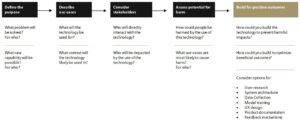Image by Freepik.com
People keep saying Trump is stupid. That he’s bumbling, incoherent, self-sabotaging. But I keep coming back to this question: What if that’s the wrong lens entirely? What if the chaos isn’t incompetence — but the strategy itself?
This piece is my attempt to name what I believe is really going on. I’ve spent my life in systems thinking, behavior design, peace innovation, and venture ecosystems — and from where I sit, this isn’t random. It’s a coordinated teardown of liberal democracy. And it’s coming from all directions: tech, finance, ideology, media, even memetics.
Trump isn’t the architect. He’s the blunt instrument. The chaos vector. The battering ram. But there’s a convergence behind him that includes ideological accelerationists, geopolitical adversaries, and techno-oligarchs — many of whom wouldn’t be caught dead in the same room, yet benefit from the same outcome: the weakening of the democratic state.
Putin. Dugin. Yarvin. Thiel. Musk. Andreessen. Balaji. The crypto-libertarian movement. They don’t need to share a manifesto. They just need the system to fail fast enough that they can shape what comes next.
Putin’s Victory in the Information War
Putin didn’t act alone. He simply saw the United States as vulnerable — and he wasn’t wrong. What made his strategy so effective was that it didn’t require conquest. It required exploitation. Exploitation of the very fractures, traumas, and unresolved conflicts the U.S. had long buried or ignored.
Racial injustice. Wealth inequality. Rural-urban resentment. Distrust in media. Generational divides. America had no shortage of kindling — and foreign and domestic actors alike lit matches.
The brilliance of this strategy lies in its asymmetry. It wasn’t just Russia. It was a growing constellation of opportunists — from authoritarian governments to tech oligarchs to ideological provocateurs — who all gained from a fragmented, suspicious, confused American public.
In other words, the conditions were already here. What changed is that someone figured out how to weaponize them at scale.
There’s another piece we need to name clearly: Vladimir Putin waged a war against the United States — and he won. Not with tanks or missiles. But with influence campaigns, memetic warfare, and systemic disinformation. It was a modern technological war, but not in the way people usually mean it.
He didn’t need drones. He needed doubt.
Russia’s information strategy was cheap, scalable, and deniable. It destabilized our collective sense of truth, deepened polarization, and weakened institutional legitimacy. And it worked without risking a single Russian soldier.
Trump was the perfect asset — not because he was controlled, but because he was useful. He amplified the chaos. He mirrored the tactics. And he served as the accelerant for a broader unraveling of public trust.
Why This Doesn’t Look Like Politics As Usual
In the old paradigm, we judged politicians by whether they could pass legislation, run agencies, or build coalitions.
By those metrics, Trump looks like a disaster. He rants. He contradicts himself. He fires experts and installs loyalists. He threatens war one day and praises dictators the next. Markets swing wildly after every tweet.
But maybe he’s not failing at politics. Maybe he’s succeeding at something else entirely: creating so much instability, distrust, and confusion that the system stops functioning. And that vacuum? That’s where new regimes get built.
This isn’t about policy. It’s about power. And it’s about building something new on the rubble of the old.
The Chaos Blueprint (As I See It)
This is how I’ve come to understand the strategy:
- Undermine trust in institutions — Make it impossible for people to believe in media, elections, courts, science, or government. Flood the public square with conflicting narratives until no one knows what’s real.
- Break governance from the inside — Appoint saboteurs to key positions. Hollow out regulatory agencies. Turn the rule of law into a partisan weapon.
- Destabilize global systems — Use trade wars, sudden tariffs, or diplomatic shocks to unravel alliances and weaken international norms.
- Privatize everything — Shift control from public institutions to private platforms and corporate actors. Make citizenship contingent on access, subscription, or loyalty.
- Prototype elite alternatives — Network states. Private cities. Crypto enclaves. These are the experiments happening in plain sight.
- Control the future narrative — Whoever controls the story about what comes next controls the architecture of that future.
When I stopped judging this through the lens of governance and started reading it as a campaign to collapse and replace the system, it all clicked.
The Strange Convergence
There’s no single mastermind here. But there are overlapping agendas:
- Putin wants to weaken the West and restore Russian power. Trump was useful for that.
- Dugin promotes a philosophy that sees liberal democracy as an existential enemy.
- Yarvin advocates replacing democracy with tech-led monarchism — yes, really.
- Thiel funds anti-democratic candidates and questions whether democracy and capitalism are even compatible.
- Andreessen wants to blast past regulation and accelerate us into the future, whatever the social cost.
- Musk seems to want the power of a nation-state without the responsibility.
- Crypto-libertarians want to exit from fiat systems and build parallel institutions.
They’re not aligned ideologically — but they benefit from the same breakdown. And Trump is the accelerant.
Why Financial Advisors and Investors Should Care
This isn’t just political chaos. It’s a full-blown risk environment for global markets.
Trump’s tariff plans aren’t economic policy. They’re a geopolitical protection racket. A 10% universal tariff and targeted 60% tariffs on China? That’s not about trade — it’s a leverage play. It punishes exporters, distorts supply chains, and introduces systemic volatility.
The people who feel it first? Pension funds. 401(k)s. Everyday retirement accounts. This isn’t a short-term dip — it’s a coordinated assault on the very assumptions that long-term investing depends on: rule of law, stable institutions, consistent regulation.
If you’re an investor, allocator, or advisor, you need to ask: what happens when the “exit” crowd takes control of the system and starts pulling it apart on purpose?
The old playbook — diversify, hold, ride it out — was built for cyclical volatility. This is something else.
Why This Isn’t Being Explained Clearly
Because it breaks too many frames:
- The media can’t say it without sounding conspiratorial.
- The intelligence community isn’t in a position to make sweeping ideological diagnoses.
- Most public discourse is stuck treating Trump as a fluke instead of a feature.
And most of us? We’re busy surviving. We don’t have time to connect Yarvin’s Substack to Musk’s tweets to Hungarian illiberalism to crypto governance experiments. (Except for Dave Troy)
But that’s what’s happening.
What Happens If They Win
If the chaos blueprint succeeds:
- Governance becomes privatized.
- Citizenship becomes tiered.
- Public systems get replaced by private platforms.
- Political rights become market privileges.
Your retirement? Subject to extortionate macro policy shifts. Your access to services? Mediated by a platform. Your ability to dissent? Algorithmically throttled.
It’s corporate feudalism in a slick new interface.
What’s Actually Happening
You are witnessing a coordinated fragmentation of American sovereignty, executed through:
- Memetic warfare — misinformation campaigns, outrage cycles, and cultural fatigue loops
- Institutional corrosion — defunding agencies, delegitimizing governance, and purging civil servants
- Monetary insurgency — cryptocurrency disruption, offshore capital flows, and dark money networks
- Legal asymmetry — flooding the courts and weaponizing legal doctrines like free speech and states’ rights
- Techno-political cover — platforms claiming neutrality while optimizing for rage and algorithmic chaos
At the center of this vortex is Trump — the ideal chaos vector:
Loved by the mob, backed by billionaires, useful to adversaries, immune to shame.
What We Can Do
Let’s acknowledge where we really are: we’ve been in a kind of functional freeze since COVID. Our nervous systems, our institutions, and our communities took a hit — and the waves haven’t stopped. Between inflation, AI anxiety, layoffs in the tech industry, plus the massive federal layoffs thanks to DOGE, the financial trauma is compounding. People are afraid to look at their retirement accounts, much less figure out how to fight for democracy.
So the first thing we do is recognize that freeze. That fog. That fatigue. You’re not imagining it. It’s real.
But the antidote to paralysis is agency. And the antidote to isolation is coordination.
So here’s a starting point:
- Talk about what’s actually happening. Share this. Remix it. Use it to name what your gut is already telling you. When we name the strategy, we defuse the gaslighting.
- Find your team. You’re not alone. There are people working on peace infrastructure, regenerative finance, tech for public good, civic trust systems, and new governance models. Link up.
- Build dual-power systems. We can’t wait for broken institutions to fix themselves. Start local. Mutual aid. Public tech. New cooperatives. Financial tools designed for dignity, not just alpha.
- Resource the builders. Shift time, talent, and capital toward people and organizations building luminous alternatives. The old world is collapsing. The new one is under construction.
- Care for your nervous system. This is a marathon, not a sprint. Take care of yourself and the people around you. That’s not indulgent — it’s strategic.
This isn’t about resisting harder. It’s about organizing smarter. We need to build structures — social, financial, technological, and narrative — that can carry us through collapse and into what’s next.
Because no one is coming to save us.
But we can still save each other.
We can name it. We can stop treating this as incompetence and start seeing it as a coordinated attempt to break the operating system of liberal democracy. We can invest in peace infrastructure, mutualist economics, civic tech, and behaviorally-informed public systems. We can stop asking how to survive in their world and start building our own.
One based on dignity, trust, fairness, and shared power.
Further Reading & Source Materials
Ideological Foundations & Post-Democratic Theory
- Curtis Yarvin (aka Mencius Moldbug) — Unqualified Reservations blog archive
Explore Yarvin’s writings on neoreactionary thought.
https://www.unqualified-reservations.org/ - Patrick Deneen — Why Liberalism Failed
A critique of liberalism’s inherent contradictions.
https://yalebooks.yale.edu/book/9780300240023/why-liberalism-failed - Aleksandr Dugin — The Fourth Political Theory
An introduction to an alternative political ideology beyond liberalism, communism, and fascism.
https://en.wikipedia.org/wiki/The_Fourth_Political_Theory - Balaji Srinivasan — The Network State
Discusses the concept of starting new countries enabled by technology.
https://thenetworkstate.com/ - Nick Land — The Dark Enlightenment
Explores critiques of democracy and modernity.
https://www.amazon.com/Dark-Enlightenment-Imperium-Press/dp/192260268X?
Tech Oligarchs, Capital, and Chaos
- Marc Andreessen — The Techno-Optimist Manifesto
Advocates for unrestrained technological development.
https://www.theguardian.com/commentisfree/ng-interactive/2025/mar/11/democrats-liberal-technology-innovation - Peter Thiel — The Straussian Moment lecture
Thiel’s perspectives on politics and philosophy.
https://youtu.be/iRleB034EC8 - Max Chafkin — The Contrarian: Peter Thiel and Silicon Valley’s Pursuit of Power
A biography examining Thiel’s influence in tech and politics.
https://www.penguinrandomhouse.com/books/609711/the-contrarian-by-max-chafkin/ - Reid Hoffman & Eric Schmidt — Tech Titans: A Conversation
Discussion on the future of technology and society.
https://milkeninstitute.org/content-hub/event-panels/tech-titans-conversation-reid-hoffman-and-eric-schmidt - Jacob Silverman & Ben McKenzie — Easy Money: Cryptocurrency, Casino Capitalism, and the Golden Age of Fraud
An investigative look into the cryptocurrency boom and bust.
https://store.abramsbooks.com/products/easy-money?Amazon - Evgeny Morozov — To Save Everything, Click Here: The Folly of Technological Solutionism
Critiques the idea that technology can solve all societal problems.
https://www.hachettebookgroup.com/titles/evgeny-morozov/to-save-everything-click-here/9781610393706/?Hoover Institution
Accelerationism, Crypto, and Network Power
- Vitalik Buterin — DAOs are not corporations: where decentralization in autonomous organizations matters
Explores the importance of decentralization in DAOs.
https://vitalik.eth.limo/general/2022/09/20/daos.html?CryptoSlate - Packy McCormick — Not Boring: Us Against Spacetime
Discusses the improbability and promise of being alive on Earth in 2025.
https://www.notboring.co/p/us-against-spacetime?notboring.co - Molly White — Web3 is Going Just Great
A timeline highlighting issues in crypto and blockchain projects.
https://www.web3isgoinggreat.com/?Web3 is Going Just Great - Drilled Media — Hot Take: Fixing Media Is a Climate Solution
Discusses the influence of fossil fuel industries on media narratives.
https://drilled.media/news/fixing-media?Drilled - “Crypto Colonies” — Podcast Episode on Venture Capital and Sovereign Experiments
Examines the intersection of venture capital and attempts at creating new sovereign entities.
https://drilled.media/podcasts/drilled?
Geopolitical Chaos & Trump as Agent
- Timothy Snyder — On Tyranny: Twenty Lessons from the Twentieth Century
Provides lessons on resisting authoritarianism.
https://www.amazon.com/On-Tyranny-Twenty-Lessons-Twentieth/dp/0804190119? - David Frum — Trumpocalypse: Restoring American Democracy
Analyzes the impact of Trump’s presidency and proposes paths forward.
https://www.amazon.com/Trumpocalypse-Restoring-Democracy-David-Frum/dp/0062978411 - Barton Gellman — The Election That Could Break America (The Atlantic): https://www.theatlantic.com/magazine/archive/2020/11/what-if-trump-refuses-to-concede/616424/
- Fiona Hill — Impeachment Testimony & Writings: https://www.brookings.edu/people/fiona-hill/
- Anne Applebaum — Twilight of Democracy: https://www.penguinrandomhouse.com/books/617379/twilight-of-democracy-by-anne-applebaum/
Systems Mapping & Strategic Insight
- Dave Troy — The Social Graph of Insurrection (Twitter thread): https://twitter.com/davetroy/status/1616178679872325632
- Dave Troy — The Insurrection Economy (Washington Spectator): https://washingtonspectator.org/insurrection-economy-troy/
- Dave Troy — Dave Troy Substack — The Cognitive Infrastructure Project: https://davetroy.substack.com/
Additional Commentary & Cultural Critique
How Democracies Die Slowly and Quietly: https://www.theissue.co/how-democracies-die-slowly-and-quietly/
Umair Haque — The Issue (new platform): https://www.theissue.co
Umair Haque — The Geopolitics of a Post American Collapse World, or, The World Over the Next Decade: https://www.theissue.io/the-geopolitics-of-a-post-american-collapse-world-or-the-world-over-the-next-decade/
Umair Haque — America’s Life Savings Belong to Donald Trump Now — or, What Happens to the Economy Next: https://www.theissue.io/americas-life-savings-belong-to-donald-trump-now-or-what-happens-to-the-economy-next/
Umair Haque — Trump Just Nuked the Economy, or, America is a Submerging Market Now: https://www.theissue.io/trump-just-nuked-the-economy-or-america-is-a-submerging-market-now/





